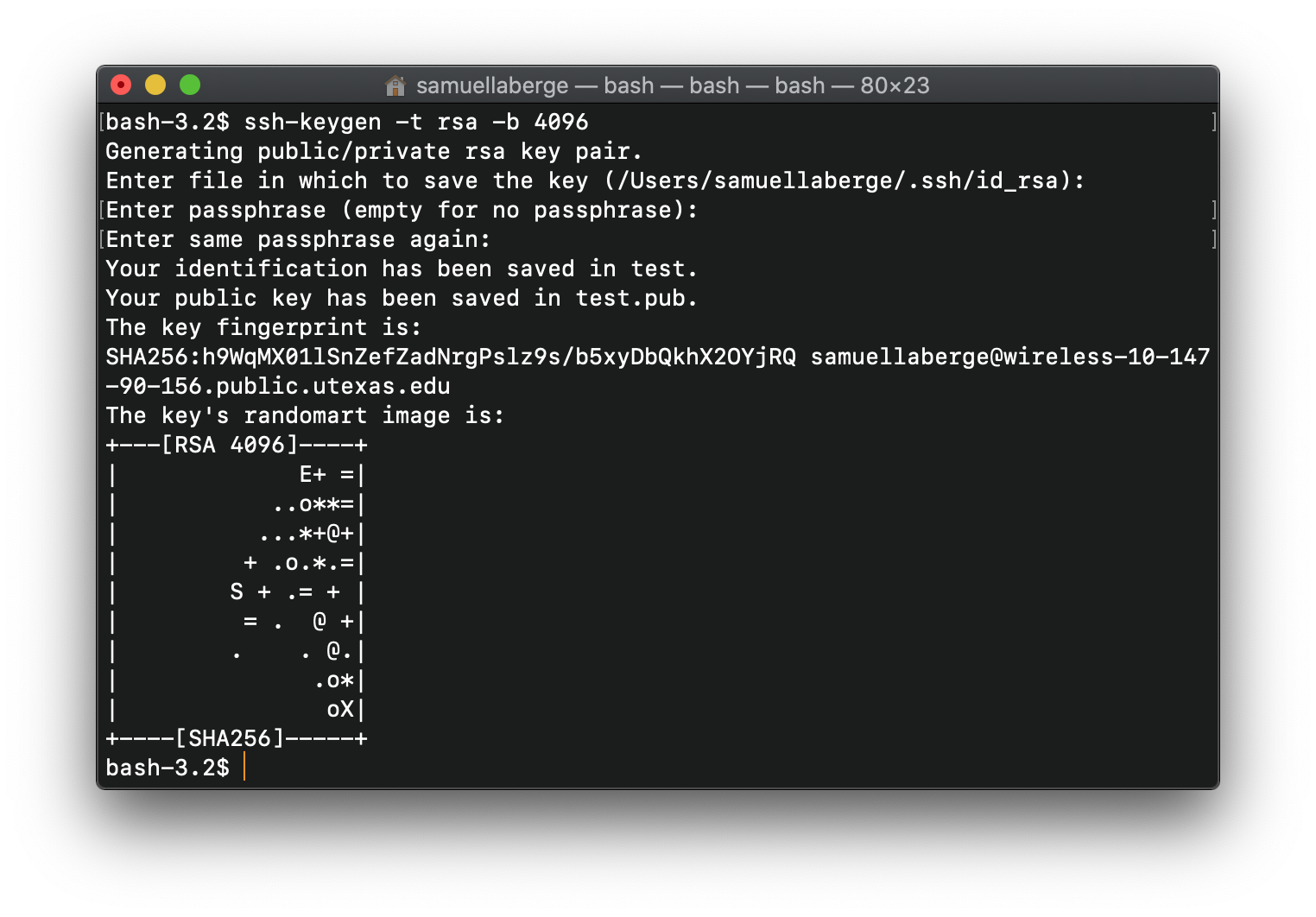SSH Keys #
Setting up SSH Keys will allow us to connect to the lab machines from off-campus without needing to use the VPN.
SSH Keys are also a more secure form of authentication than just passwords. So, if you ever set up a server which is accessible over the internet (say, for a website) in the future, make sure to use SSH Keys for authentication.
Prerequisites #
- Make sure you can connect to a lab machine over SSH. This may require using the UT VPN if off-campus.
Creating a Key Pair #
First, we need to create a public/private key pair on our local machine. The public key will be sent to the lab machine whereas the private key should remain on your personal computer and never be shared with anyone.
To create a key, run the following command in your terminal or command prompt:
ssh-keygen -t rsa -b 4096
You will then be prompted to choose a location to store the keys. It is recommended to use the default location, so just press Enter without entering anything at the prompt.
You will then be prompted to enter a passphrase for this key. The CS Department strongly recommends using a passphrase alongside your keys, although it is not necessary. If you choose to enter a passphrase, you will be prompted to enter it anytime you log into the lab machines from off campus. If you do not want to use a passphrase, press Enter without entering one.
You will then be prompted to confirm your passphrase.
The output should look similar to below.

By default, the public key is stored in a file called id_rsa.pub.
On macOS/Linux this file is in the hidden directory called .ssh in
your home directory. On Windows it is located in
C:\Users\<YOUR_USERNAME>\.ssh\ by default.
The private key is stored in the same directory but named id_rsa.
This file should never be moved off of your computer or
shared with anyone.
Sending your key to the Lab Machine #
Now, we need to send a copy of our public key to a lab machine Once your key has been copied to one lab machine, it can be used to log in to any other lab machine. Follow the instructions for your operating system:
Type the following command into your terminal. Be sure to replace
CS_USER with your CS username.
ssh-copy-id CS_USER@linux.cs.utexas.edu
If prompted “Are you sure you want to continue connecting?” type
yes and press Enter. You may need to enter your CS password.
Type the following command into your command prompt. Be sure to
replace CS_USER with your CS username.
type .ssh\id_rsa.pub | ssh CS_USER@linux.cs.utexas.edu "umask 0077 && mkdir -p ~/.ssh && cat >> ~/.ssh/authorized_keys"
If prompted “Are you sure you want to continue connecting?” type
yes and press Enter. You may need to enter your CS password.
If everything was done successfully, you should now be able to log into the lab machines from off-campus (without using the VPN)!
Sources #
This guide is based on UTCS’s guide found here.